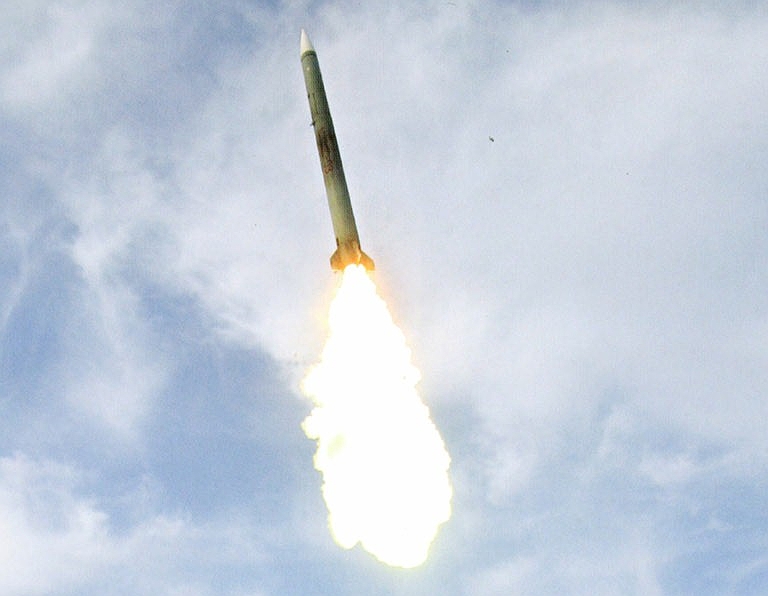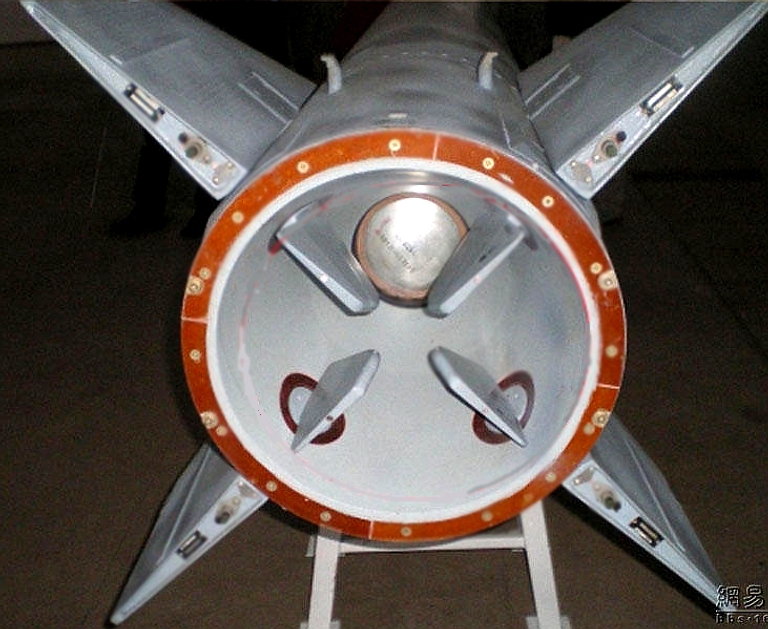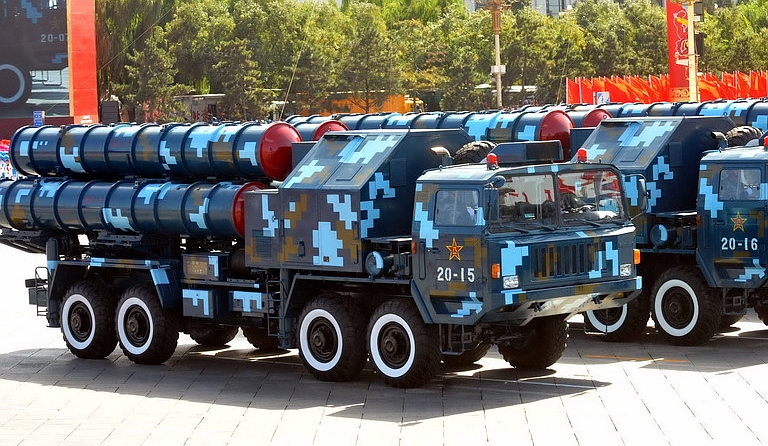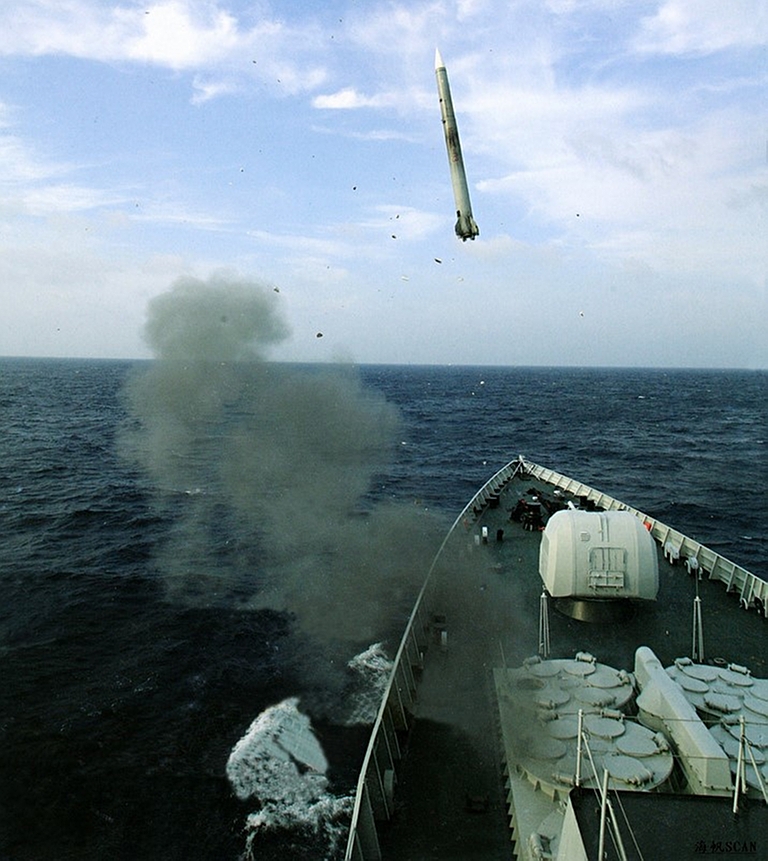|
||||||||||||||||||||||
![Home - Air Power Australia Website [Click for more ...]](APA/APA-Title-Main.png) |
||||||||||||||||||||||
![Sukhoi PAK-FA and Flanker Index Page [Click for more ...]](APA/flanker.png) |
![F-35 Joint Strike Fighter Index Page [Click for more ...]](APA/jsf.png) |
![Weapons Technology Index Page [Click for more ...]](APA/weps.png) |
![News and Media Related Material Index Page [Click for more ...]](APA/media.png) |
|||||||||||||||||||
![Surface to Air Missile Systems / Integrated Air Defence Systems Index Page [Click for more ...]](APA/sams-iads.png) |
![Ballistic Missiles and Missile Defence Page [Click for more ...]](APA/msls-bmd.png) |
![Air Power and National Military Strategy Index Page [Click for more ...]](APA/strategy.png) |
![Military Aviation Historical Topics Index Page [Click for more ...]](APA/history.png)
|
![Intelligence, Surveillance and Reconnaissance and Network Centric Warfare Index Page [Click for more ...]](APA/isr-ncw.png) |
![Information Warfare / Operations and Electronic Warfare Index Page [Click for more ...]](APA/iw.png) |
![Systems and Basic Technology Index Page [Click for more ...]](APA/technology.png) |
![Related Links Index Page [Click for more ...]](APA/links.png) |
|||||||||||||||
![Homepage of Australia's First Online Journal Covering Air Power Issues (ISSN 1832-2433) [Click for more ...]](APA/apa-analyses.png) |
||||||||||||||||||||||
| Last Updated: Mon Jan 27 11:18:09 UTC 2014 | ||||||||||||||||||||||
|
||||||||||||||||||||||
CPMIEC HQ-9 / HHQ-9 / FD-2000 / FT-2000
|
||||||||||||||||||||||||||||||||||||||||||
| by
Dr
Carlo
Kopp, AFAIAA,
SMIEEE,
PEng November 2009 Updated December, 2009 Updated January, August, 2010 Updated April, 2012 Text, Line Art © 2009 - 2012 Carlo Kopp Imagery © 2009 Bradley Huang Imagery © 2010 Air Power Australia  |
||||||||||||||||||||||||||||||||||||||||||
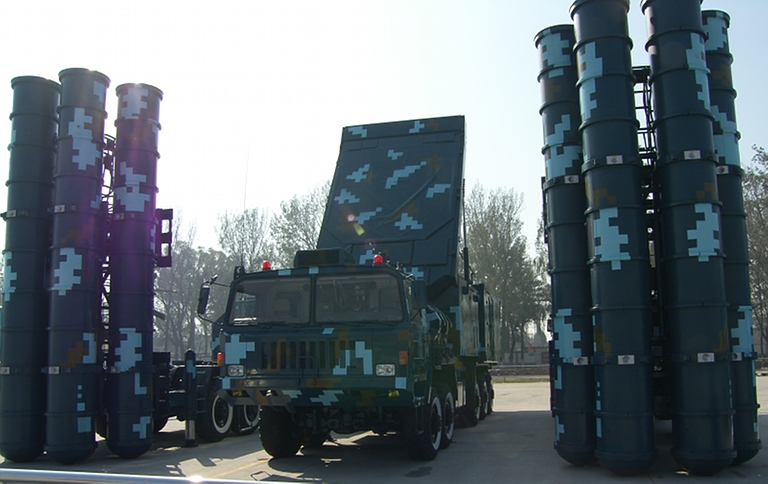 HQ-9 TELs on 8 x 8 TAS-5380 chassis with HT-233 engagement radar (© 2009, Bradley Huang). |
||||||||||||||||||||||||||||||||||||||||||
| |
||||||||||||||||||||||||||||||||||||||||||
|
||||||||||||||||||||||||||||||||||||||||||
IntroductionThe
FD-2000/HQ-9 was
developed to provide a long range SAM capability, distinct from the
medium
range capabilities of the HQ-12/KS-1 series. The FT-2000 is a derivative which is fitted with an anti-radiation
seeker and
intended for engagements against AEW&C/AWACS and stand-off jamming
aircraft.
The PLA have
not been overly generous in disclosing details of this design. There is
general
agreement in open sources that the HQ-9 uses Russian S-300PMU
technology
extensively, including the cold launch design for vertical ejection
from
launcher tubes on TELs, 5V55/48N6 rocket
motor
technology, and a range of other S-300PMU components, including an 8 x
8 four
tube TEL modelled on the 5P85SU/DU series.
Some
sources claim the weapon uses a two stage
arrangement
akin to the S-300V, but more recent imagery shows this is not correct.
Slant range performance figures also vary across sources,
between 50
and 100 nautical miles. What data is available suggests a missile which
is
similar in capability to early variants of the MIM-104 Patriot and
SA-10C/SA-20A
48N6E, including Track via Missile (TVM) guidance.
The HQ-9 is
supported by the HT-233
phased array engagement radar, like the H-200 modelled
on the MPQ-53 and 30N6E designs,
carried on a Taian
TAS5501
series 10 x 10 high mobility
vehicle, common to the
HQ-9 TEL
and similar in design to the S-400's BAZ-6900 series vehicle.
Chinese sources claim C-band operation with 300 MHz receiver/antenna
bandwidth,
detection and tracking range of 150/100 km,
and monopulse
angle tracking to resist jamming. The design bears considerable
similarity
to the 30N6E
series, especially in the antenna design.
Recently disclosed imagery shows the use of the self-propelled Type 305A, Type 305B and Type 120 radars as the battery acquisition radar component. The designation FD-2000 is for export configurations of the HQ-9. Recent reports claim the missile combines midcourse inertial / datalink and terminal active radar homing guidance [refer below]. Cited battery composition is one variant of the YLC-2V acquisition radar, one HT-233 engagement radar, 8 x Taian TAS-5380 TELs, with 32 ready rounds, one vehicle for battery positioning, one generator vehicle, one support vehicle and a mobile command post. A HQ-9 brigade level formation comprises six batteries. Recently the PLA disclosed the existence of two additional radars associated with the HQ-9 system. These are the Type 305A, modelled on the Thales GM400 AESA, and the Type 120 low altitude acquisition radar, which is similar in configuration to the earlier JY-29, JY-11B and YLC-18, but operating at a lower frequency to the latter. These radars perform analogous functions to the 64N6E Big Bird and 76N6 Clam Shell in the SA-20 battery, respectively. The Type 305B / YLC-2V series radar performs analogous functions to the ST-68U Tin Shield in early SA-20 variants, and 96L6 in the SA-20B and SA-21. The HHQ-9 is the navalised variant of the HQ-9, launched from a VLS system, on the Type 052C Luyang II class DDG. According the
US DoD, the FT-2000 has yet to be
deployed, as is the
case with the follow-on HQ-9 variants. Open sources describe the FT2000
as an inertially guided SAM with an
anti-radiation terminal
seeker, programmed before launch for the characteristics of the
intended
target. Cited frequency coverage is 2-18 GHz. Each battery includes
four unspecified ESM vehicles, used to generate
targeting
data for the missile battery. Intended targets including support
jamming aircraft, aircraft equipped with self-protection jammers, and
other radiating airborne targets, e.g. AWACS/AEW&C. The type of
passive targeting system has not been disclosed, but variants of the
CETC YLC-20
presented then as the most likely candidate. The more recent DWL002 is
much better suited.
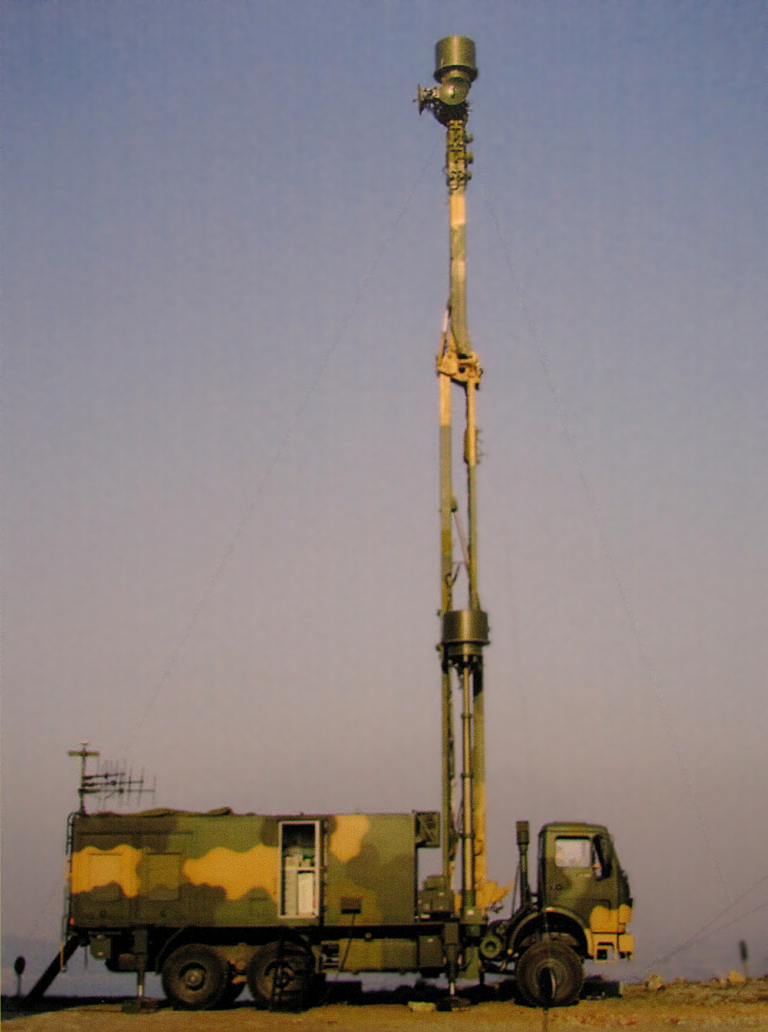 CETC DWL002
Passive Detection System fully deployed (CETC image).
To date there has been no evidence displayed of integration between the HQ-9 battery components and the new CETC DWL002 Passive Detection System, which has been engineered from the outset with a heightfinding capability to support SAM battery engagement radar cueing and possibly missile midcourse guidance. The high production expense of duplicating antenna and receiver chains to provide a genuine 3D capability as done in the DWL002 design would not be incurred if its role was confined to simple area surveillance, as is the case with its 2D only Warsaw Pact developed predecessors. Co-deployment of the DWL002 with HQ-9 battery acquisition radars is thus a very likely near future development. The system would be compatible with the TVM (SAGG) guidance of standard HQ-9/FD-2000 rounds as well as the FT-2000 anti-radiation round. Given that the FT-2000 is derived from the HQ-9, claims that this weapon has not been deployed should be treated with caution, since the missile and its guidance support package could have been integrated into the baseline HQ-9 system design, and other than by covert intelligence gathering or PLA disclosure, this cannot be easily determined by simple observation. It is entirely conceivable that a HQ-9 battery could be armed with a mix of HQ-9 /FD-2000 and FT-2000 rounds, and this could only be determined in combat once missiles are actually launched and enter their terminal guidance phase. |
||||||||||||||||||||||||||||||||||||||||||
Technical Analysis
|
||||||||||||||||||||||||||||||||||||||||||
Production and Exports
|
||||||||||||||||||||||||||||||||||||||||||
HQ-9/FD-2000/FT-2000 Technical Data
|
||||||||||||||||||||||||||||||||||||||||||
HQ-9/FD-2000 Battery Components |
||||||||||||||||||||||||||||||||||||||||||
|
||||||||||||||||||||||||||||||||||||||||||
HQ-9/FD-2000 TAS5380 Self Propelled Transporter Erector Launcher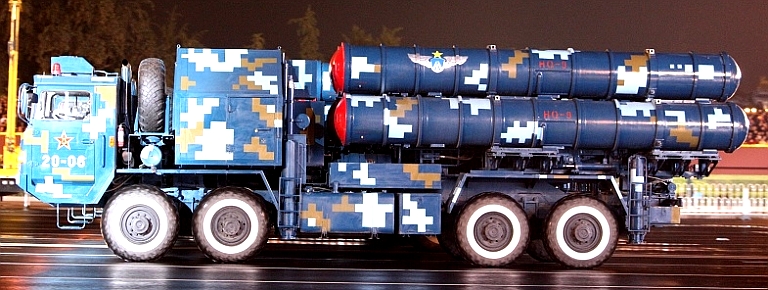 HQ-9 TELs on parade in 2009 (via Chinese Internet).
|
||||||||||||||||||||||||||||||||||||||||||
|
HQ-9/FD-2000 TAS5380 Self Propelled TEL Details 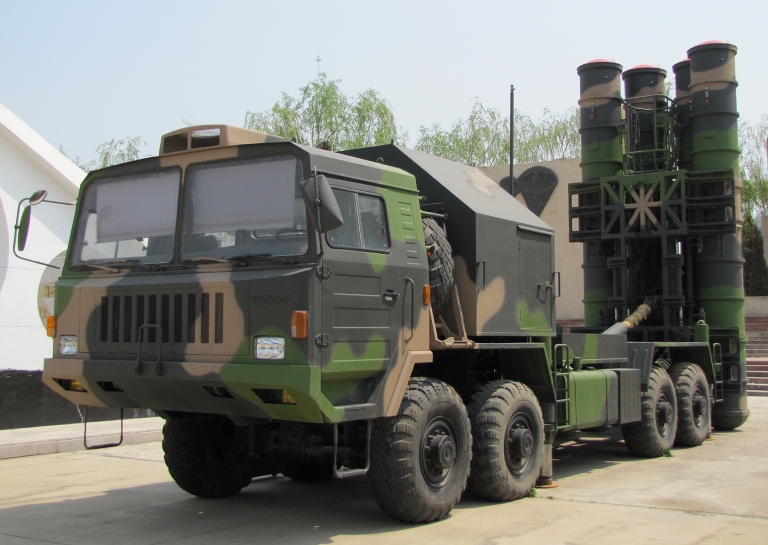 Above, below: early TAS5380 TEL on
display at Datangshan (Zhenguan Studio, © 2010 Air Power Australia).
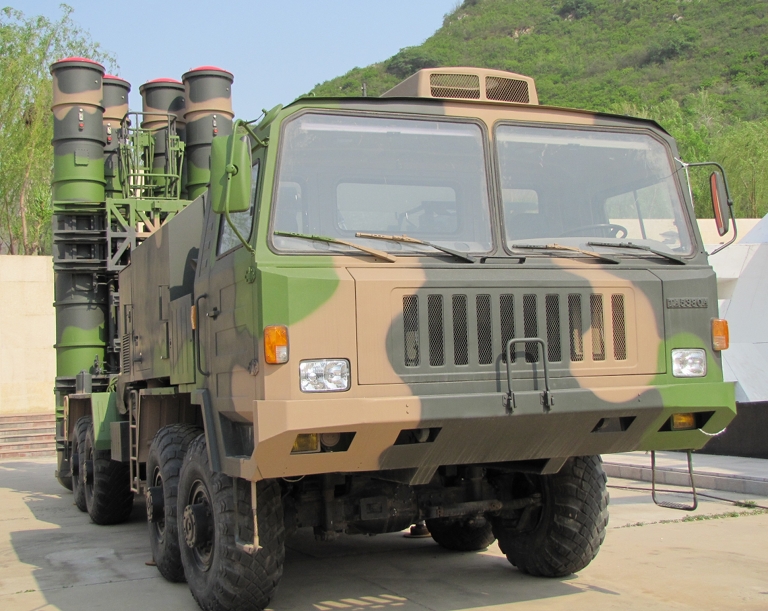 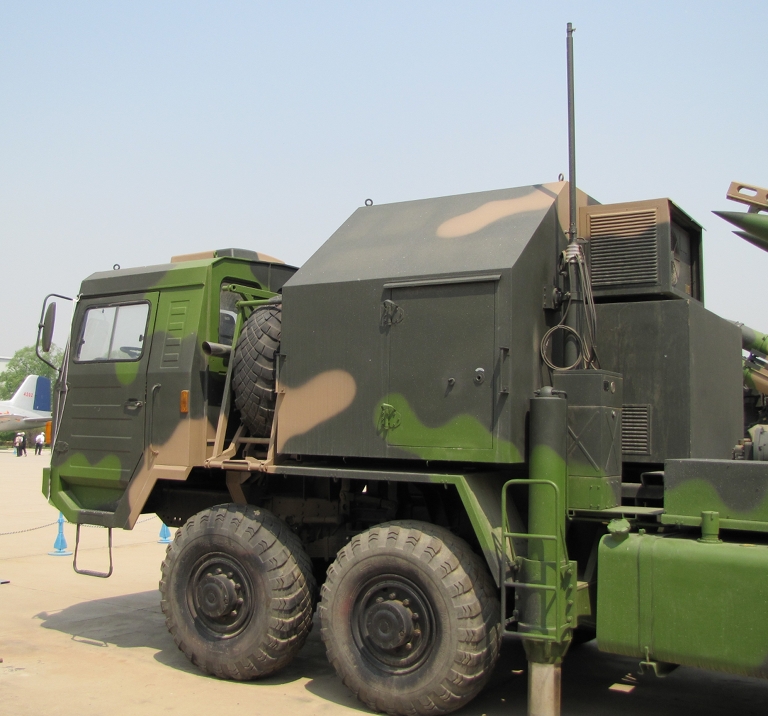 Above, below: detail of telescoping datalink mast without the antenna. Note the external tethered coaxial cable used for the antenna feed - Russian self-propelled TELs have the cable internal to the mast using a spool feed (Zhenguan Studio, © 2010 Air Power Australia). 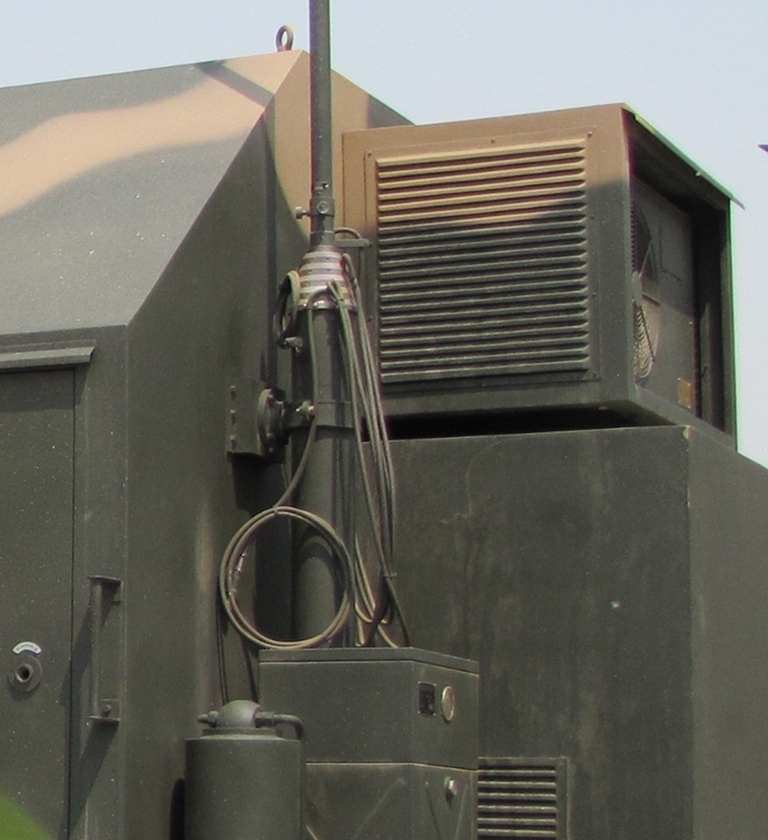 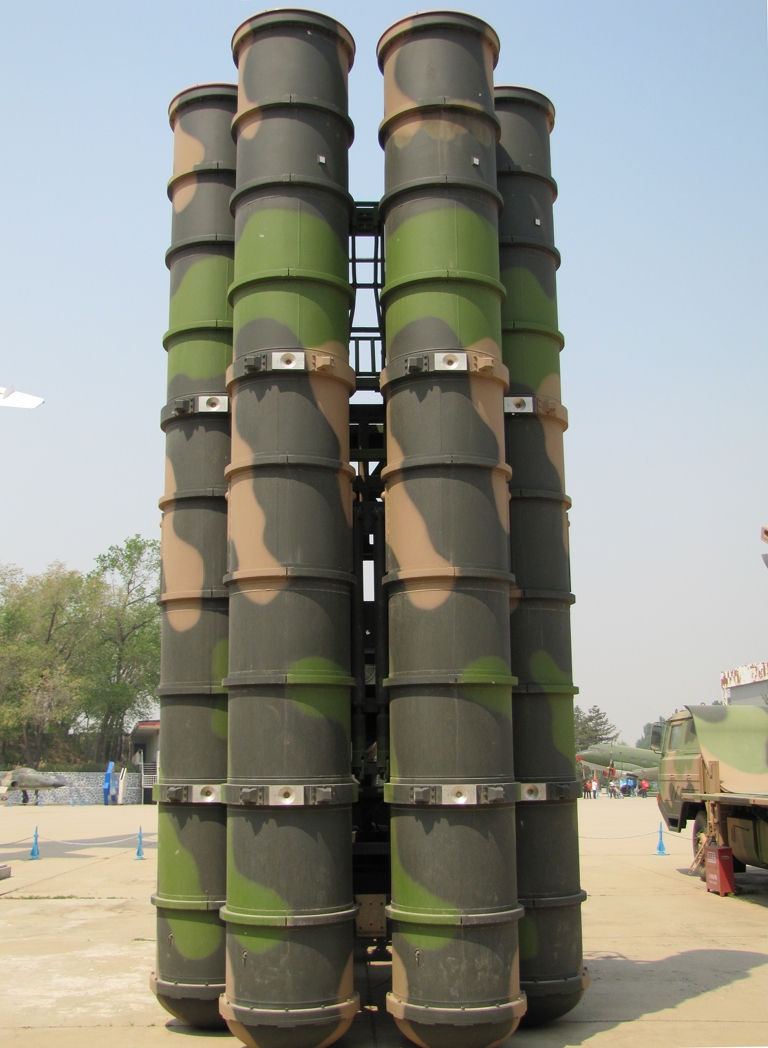 HQ-9 aft view of the deployed
launch tube / transport container assemblies (Zhenguan
Studio, © 2010 Air Power Australia).
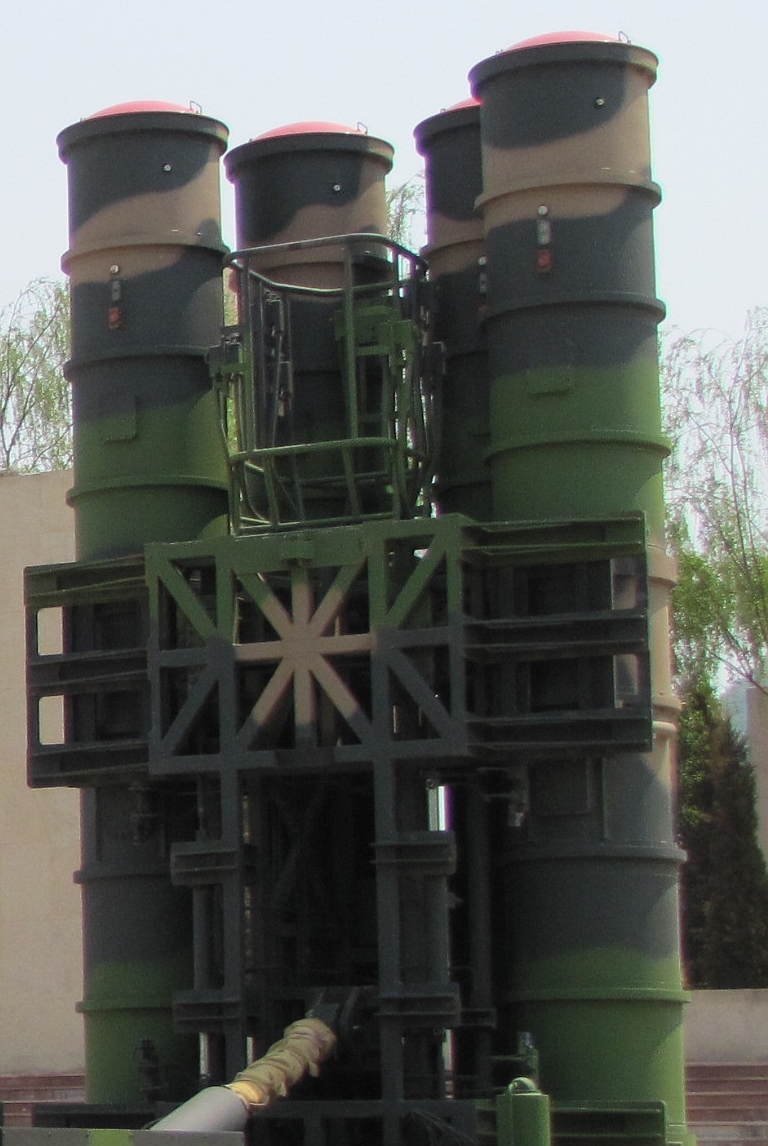 HQ-9 forward view of the deployed
launch tube / transport container assemblies, with the hydraulically
elevated gantry exposed - the ram arrangement is modelled on the S-300P
self-propelled variant TELs and is similar to a dump truck arrangement.
Note the embedded hydraulic rams in the gantry used to position the
launchers once upright (Zhenguan Studio, © 2010 Air
Power Australia).
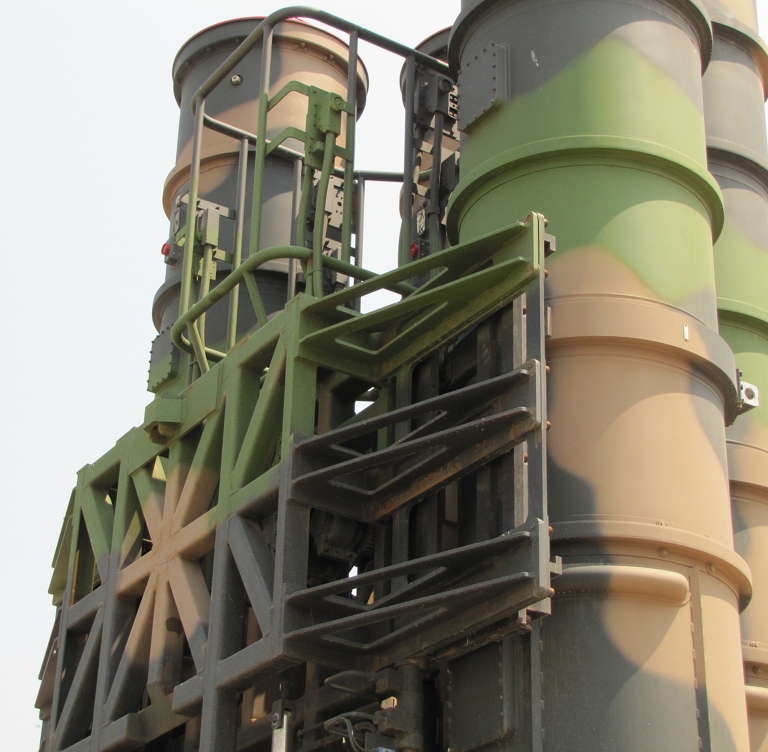 Above, below: detail of missile
umbilical interfaces, with cables removed. These provide the prelaunch
electrical power and signal interfaces to the missile inside the
launcher tube. Operational TELs would show the cables installed,
commonly observed on images of S-300P series TELs (Zhenguan Studio, ©
2010 Air Power Australia).
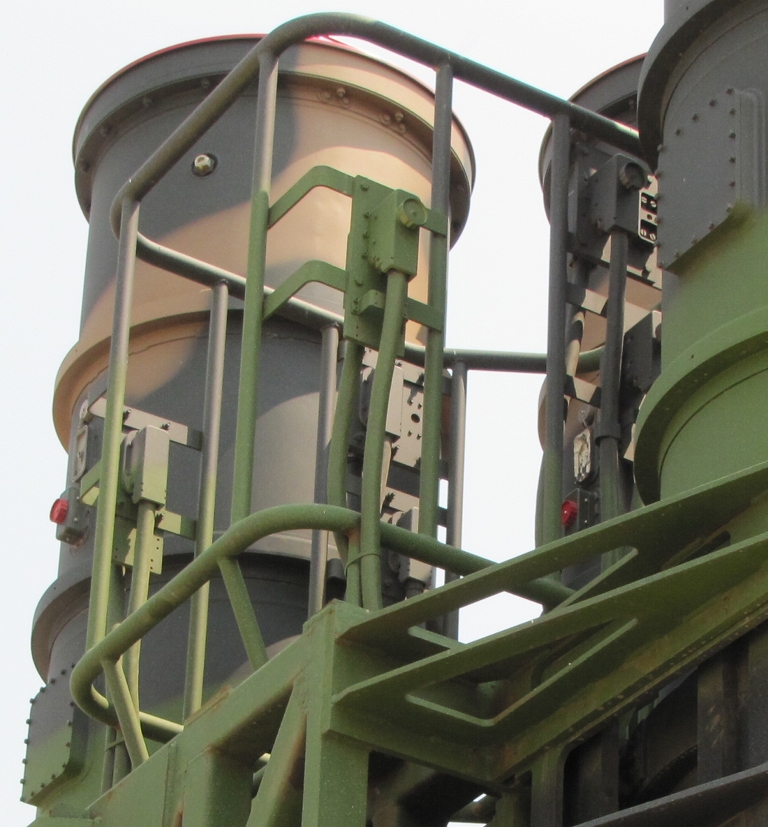 |
||||||||||||||||||||||||||||||||||||||||||
FT-2000 TAS5380 Self Propelled Transporter Erector Launcher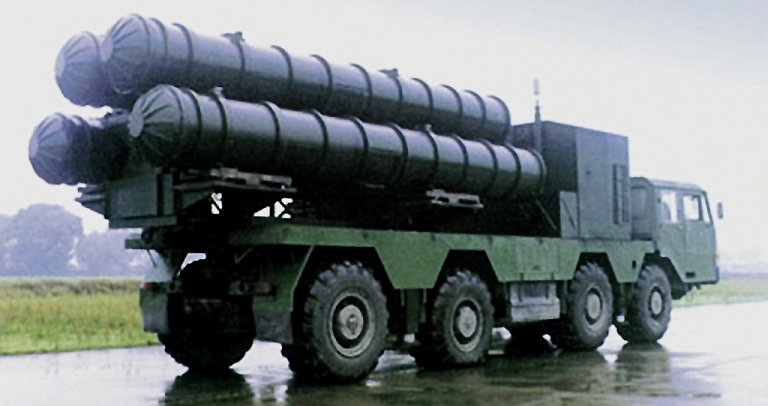 FT-2000 TEL on a variant of the 8 x 8
Taian
TAS-5380 chassis. Note the telescoping datalink antenna, absent on the
HQ-9 TEL design. The
hydraulic elevating launcher structural frame appears identical to the
HQ-9 TEL design (CPMIEC brochure image).
|
||||||||||||||||||||||||||||||||||||||||||
TWS-312 Battery Command Post No details disclosed to date. |
||||||||||||||||||||||||||||||||||||||||||
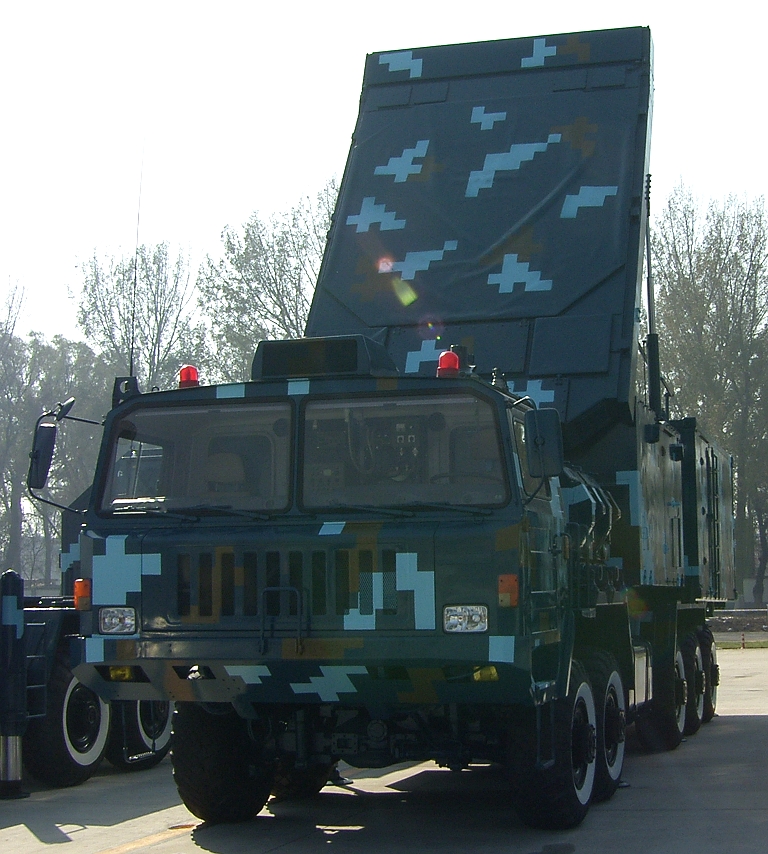 Production HT-233
PESA engagement radar on the 10 x 10 Taian TAS5501 series chassis (©
2009, Bradley Huang).
|
||||||||||||||||||||||||||||||||||||||||||
Type 305A Acquisition Radar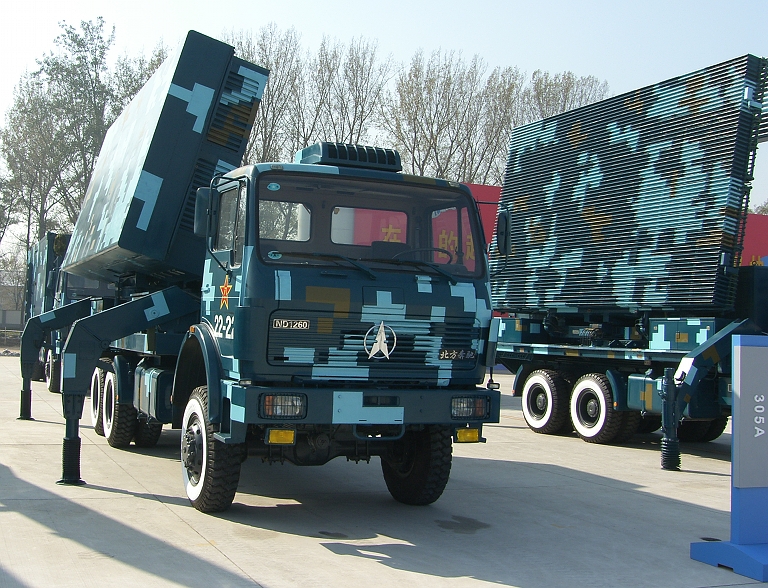 Type
305A acquisition radar deployed, in the background
to the right for
comparison the Type 305B, based on the
YLC-2V. The van parked behind the Type 305A radar head vehicle contains
the operator stations. All are carried by North-Benz ND-1260 series
trucks, a licenced Mercedes-Benz NG80 (© 2009, Bradley
Huang).
|
||||||||||||||||||||||||||||||||||||||||||
Type 305B/YLC-2V Acquisition Radar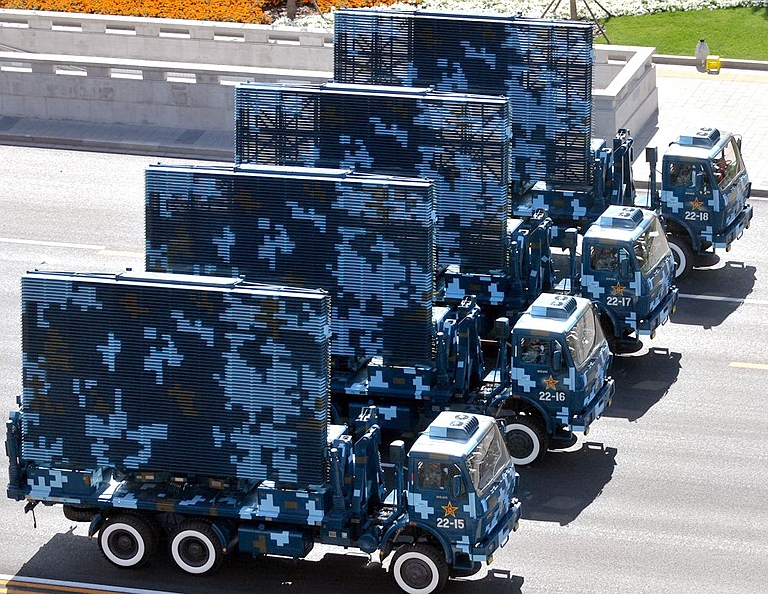 Type 305B acquisition radars with antenna deployed (via Chinese Internet). |
||||||||||||||||||||||||||||||||||||||||||
Type 120 Low Altitude Acquisition Radar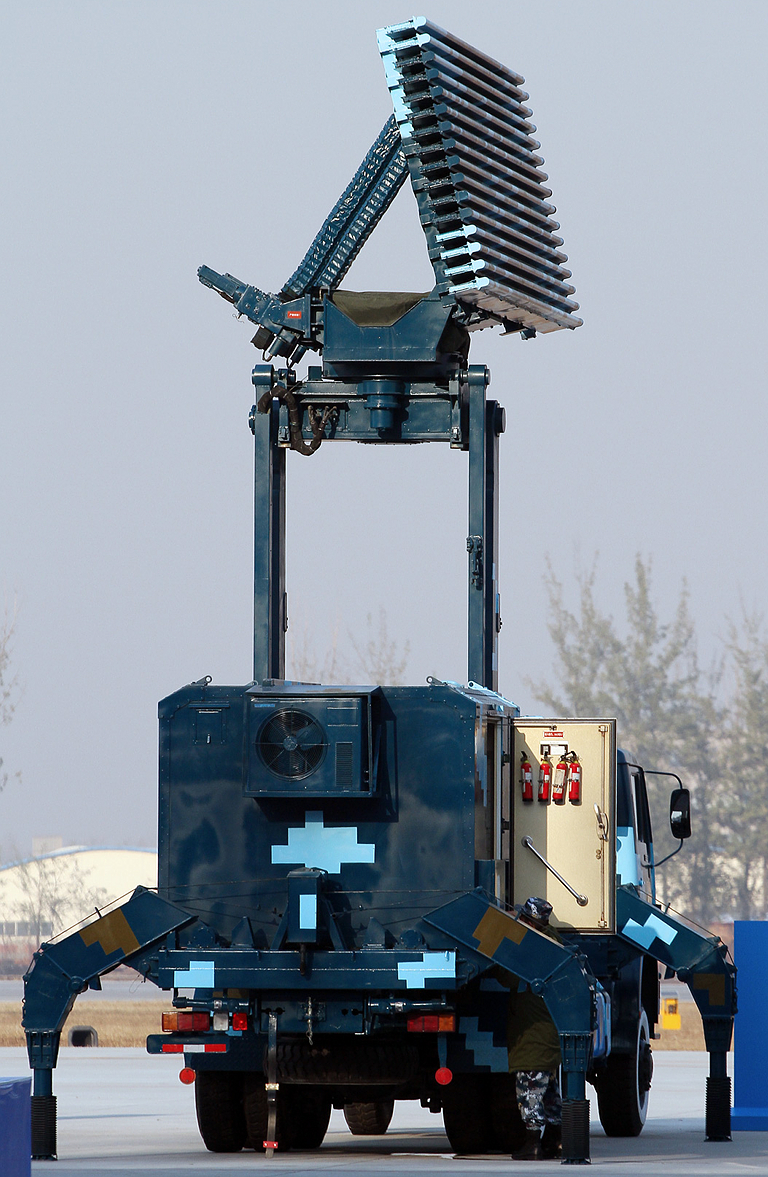 Aft view of Type 120 fully deployed (via Chinese Internet). |
||||||||||||||||||||||||||||||||||||||||||
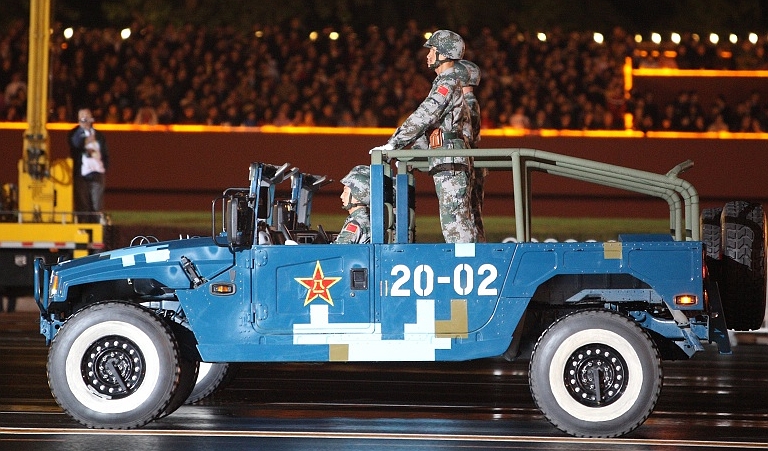 The Dong Feng EQ-2050 HMMWV is
employed frequently as the battery scout vehicle.
|
||||||||||||||||||||||||||||||||||||||||||
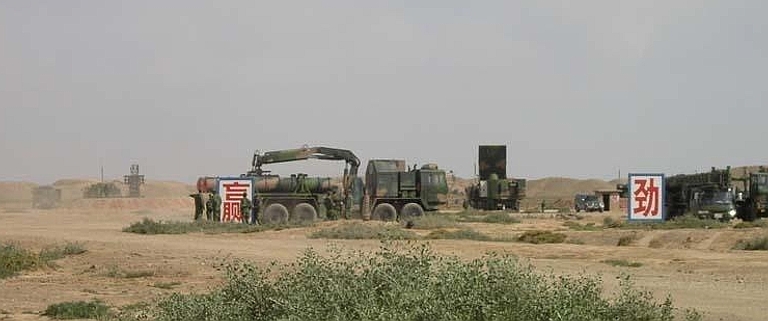 At
least
two vehicle types exist for the transportation of HQ-9 reloads. Above
is an 8 x 8 TAS5380 series high mobility transloader/transporter,
clearly derived from the HQ-9 TEL (via Chinese Internet).
|
||||||||||||||||||||||||||||||||||||||||||
HQ-9 Missile Transporter A 6 x
6 HQ-9
transporter vehicle, the vehicle is likely to be a North-Benz ND1260
series (via Chinese Internet).
|
||||||||||||||||||||||||||||||||||||||||||
HHQ-9 Missile - Type 052B/C DDG
|
||||||||||||||||||||||||||||||||||||||||||
References
|
||||||||||||||||||||||||||||||||||||||||||
 |
||||||||||||||||||||||||||||||||||||||||||
|
Technical
Report
APA-TR-2009-1103
|
||||||||||||||||||||||||||||||||||||||||||
|
|||||||||||||
![Sukhoi PAK-FA and Flanker Index Page [Click for more ...]](APA/flanker.png) |
![F-35 Joint Strike Fighter Index Page [Click for more ...]](APA/jsf.png) |
![Weapons Technology Index Page [Click for more ...]](APA/weps.png) |
![News and Media Related Material Index Page [Click for more ...]](APA/media.png) |
||||||||||
![Surface to Air Missile Systems / Integrated Air Defence Systems Index Page [Click for more ...]](APA/sams-iads.png) |
![Ballistic Missiles and Missile Defence Page [Click for more ...]](APA/msls-bmd.png) |
![Air Power and National Military Strategy Index Page [Click for more ...]](APA/strategy.png) |
![Military Aviation Historical Topics Index Page [Click for more ...]](APA/history.png)
|
![Information Warfare / Operations and Electronic Warfare Index Page [Click for more ...]](APA/iw.png) |
![Systems and Basic Technology Index Page [Click for more ...]](APA/technology.png) |
![Related Links Index Page [Click for more ...]](APA/links.png) |
|||||||
![Homepage of Australia's First Online Journal Covering Air Power Issues (ISSN 1832-2433) [Click for more ...]](APA/apa-analyses.png) |
|||||||||||||
| Artwork, graphic design, layout and text © 2004 - 2014 Carlo Kopp; Text © 2004 - 2014 Peter Goon; All rights reserved. Recommended browsers. Contact webmaster. Site navigation hints. Current hot topics. | |||||||||||||
|
Site Update
Status:
$Revision: 1.753 $
Site History: Notices
and
Updates / NLA Pandora Archive
|
|||||||||||||
|
|
Tweet | Follow @APA_Updates | |||||||||||
|
|
|||||||||||||
|
|
|||||||||||||
![F-111 Aardvark Index Page [Click for more ...]](APA/f-111.png)
![F/A-18 Hornet and Super Hornet Index Page [Click for more ...]](APA/fa-18a.png)
![Aerial Refuelling and Airlift Capabilities Index Page [Click for more ...]](APA/aar-lift.png)
![Directed Energy Weapons and Electromagnetic Bombs Index Page [Click for more ...]](APA/dew.png)
![Notices and Updates Index Page [Click for more ...]](APA/notices-128.png)
![APA NOTAM and Media Release Index Page [Click for more ...]](APA/notams-128.png)
![APA Research Activities and Policy / Technical Reports Index [Click for more ...]](APA/research-128.png)
![Search Air Power Australia Website [Click for more ...]](APA/search-128.png)
![Briefings and Submissions - Air Power Australia [Click for more ...]](APA/briefs-128.png)
![Air Power Australia Contacts [Click for more ...]](APA/contacts-128.png)
![Funding Air Power Australia [Click for more ...]](APA/funding-258.png)
